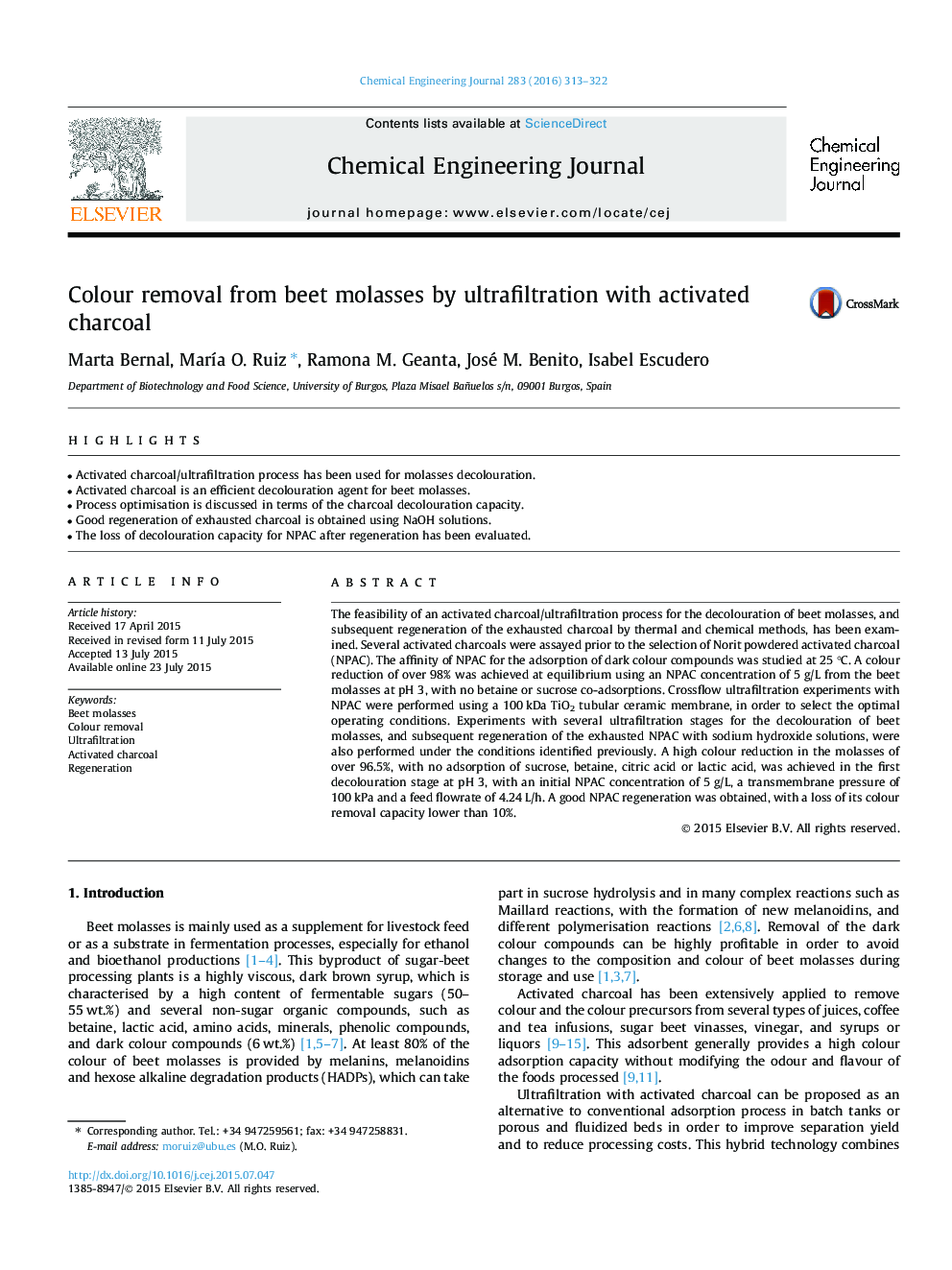| Article ID | Journal | Published Year | Pages | File Type |
|---|---|---|---|---|
| 6583618 | Chemical Engineering Journal | 2016 | 10 Pages |
Abstract
The feasibility of an activated charcoal/ultrafiltration process for the decolouration of beet molasses, and subsequent regeneration of the exhausted charcoal by thermal and chemical methods, has been examined. Several activated charcoals were assayed prior to the selection of Norit powdered activated charcoal (NPAC). The affinity of NPAC for the adsorption of dark colour compounds was studied at 25 °C. A colour reduction of over 98% was achieved at equilibrium using an NPAC concentration of 5 g/L from the beet molasses at pH 3, with no betaine or sucrose co-adsorptions. Crossflow ultrafiltration experiments with NPAC were performed using a 100 kDa TiO2 tubular ceramic membrane, in order to select the optimal operating conditions. Experiments with several ultrafiltration stages for the decolouration of beet molasses, and subsequent regeneration of the exhausted NPAC with sodium hydroxide solutions, were also performed under the conditions identified previously. A high colour reduction in the molasses of over 96.5%, with no adsorption of sucrose, betaine, citric acid or lactic acid, was achieved in the first decolouration stage at pH 3, with an initial NPAC concentration of 5 g/L, a transmembrane pressure of 100 kPa and a feed flowrate of 4.24 L/h. A good NPAC regeneration was obtained, with a loss of its colour removal capacity lower than 10%.
Related Topics
Physical Sciences and Engineering
Chemical Engineering
Chemical Engineering (General)
Authors
Marta Bernal, MarÃa O. Ruiz, Ramona M. Geanta, José M. Benito, Isabel Escudero,
